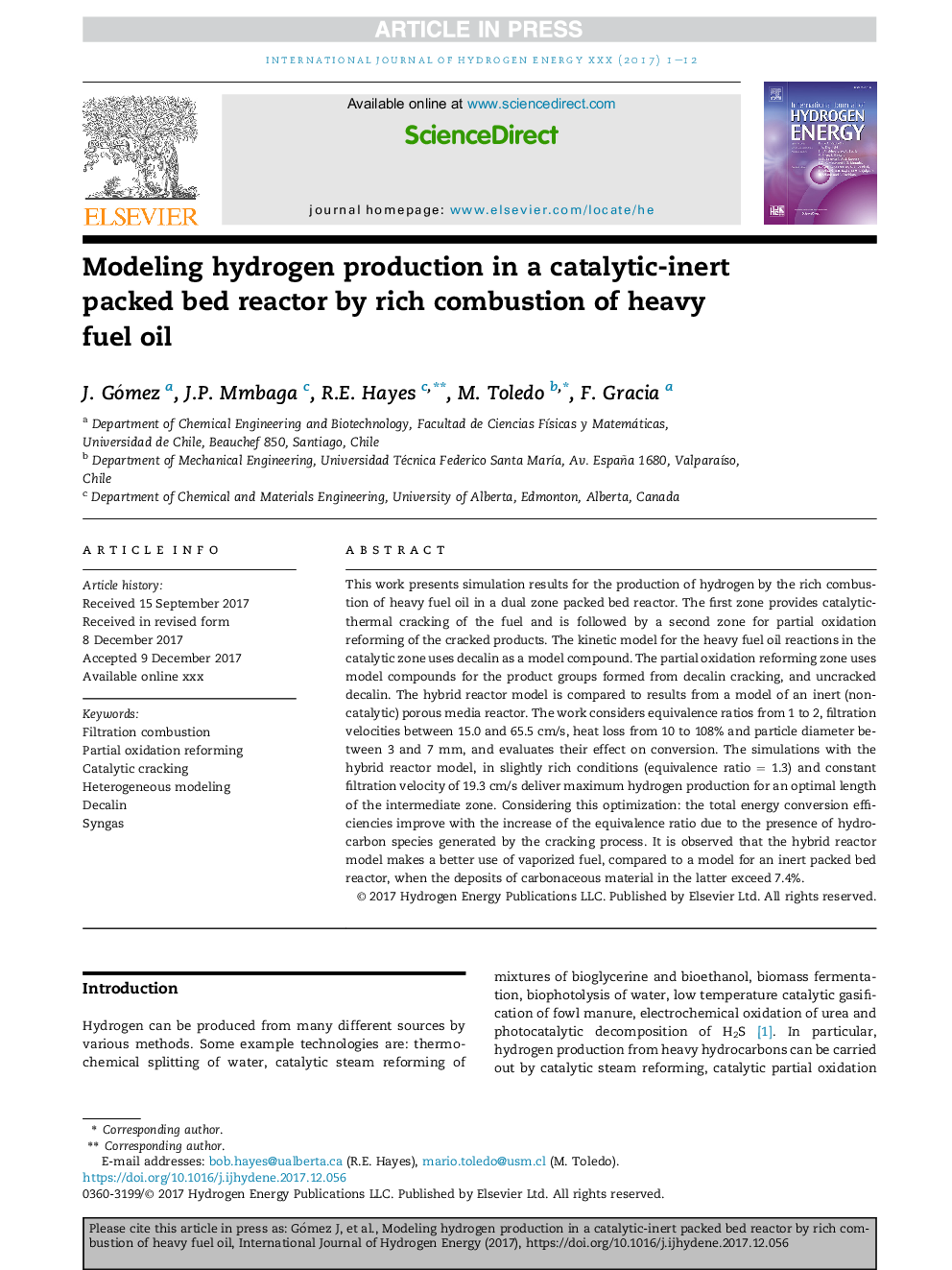| Article ID | Journal | Published Year | Pages | File Type |
|---|---|---|---|---|
| 7707970 | International Journal of Hydrogen Energy | 2018 | 12 Pages |
Abstract
This work presents simulation results for the production of hydrogen by the rich combustion of heavy fuel oil in a dual zone packed bed reactor. The first zone provides catalytic-thermal cracking of the fuel and is followed by a second zone for partial oxidation reforming of the cracked products. The kinetic model for the heavy fuel oil reactions in the catalytic zone uses decalin as a model compound. The partial oxidation reforming zone uses model compounds for the product groups formed from decalin cracking, and uncracked decalin. The hybrid reactor model is compared to results from a model of an inert (non-catalytic) porous media reactor. The work considers equivalence ratios from 1 to 2, filtration velocities between 15.0 and 65.5 cm/s, heat loss from 10 to 108% and particle diameter between 3 and 7 mm, and evaluates their effect on conversion. The simulations with the hybrid reactor model, in slightly rich conditions (equivalence ratio = 1.3) and constant filtration velocity of 19.3 cm/s deliver maximum hydrogen production for an optimal length of the intermediate zone. Considering this optimization: the total energy conversion efficiencies improve with the increase of the equivalence ratio due to the presence of hydrocarbon species generated by the cracking process. It is observed that the hybrid reactor model makes a better use of vaporized fuel, compared to a model for an inert packed bed reactor, when the deposits of carbonaceous material in the latter exceed 7.4%.
Keywords
Related Topics
Physical Sciences and Engineering
Chemistry
Electrochemistry
Authors
J. Gómez, J.P. Mmbaga, R.E. Hayes, M. Toledo, F. Gracia,
